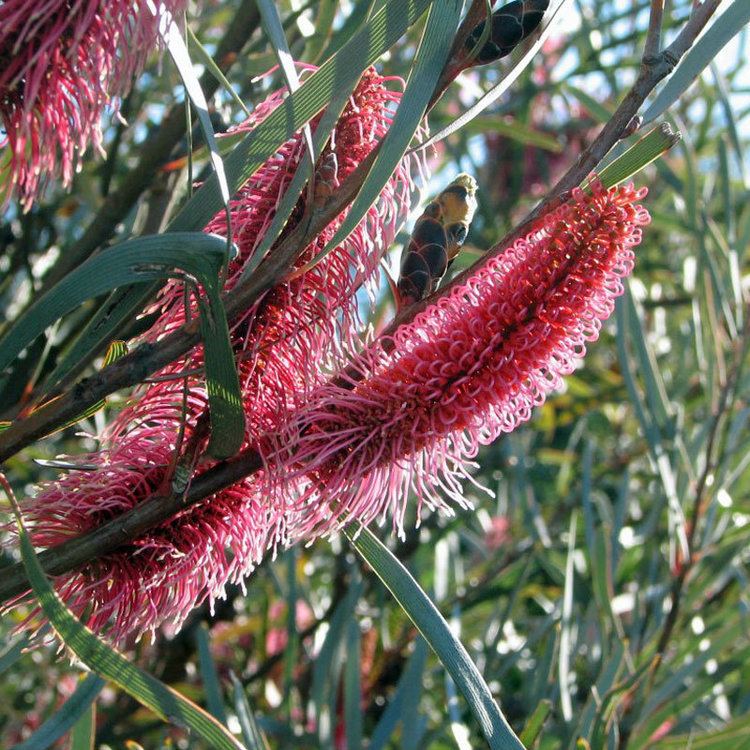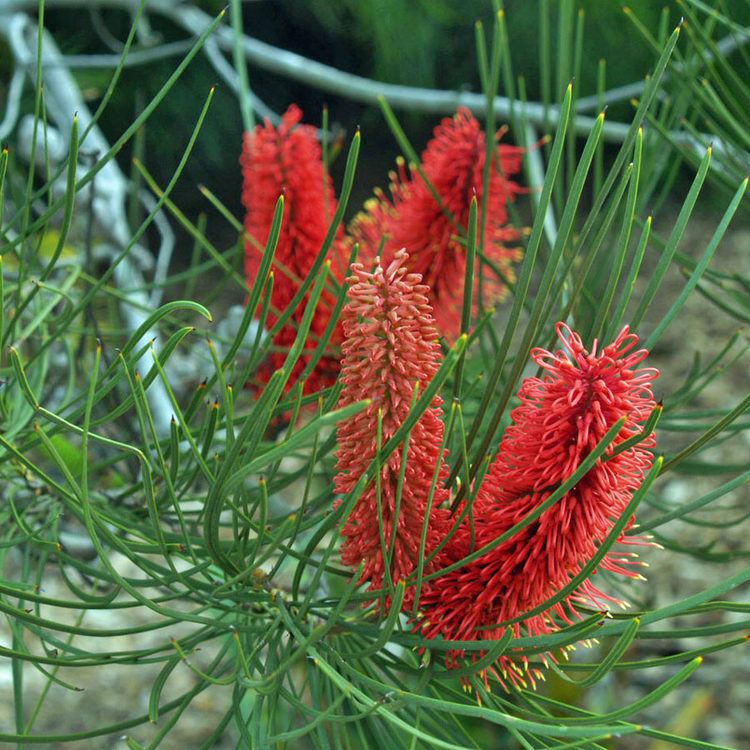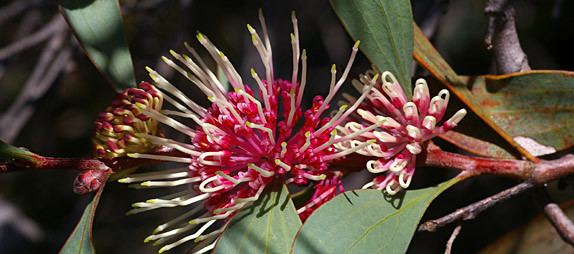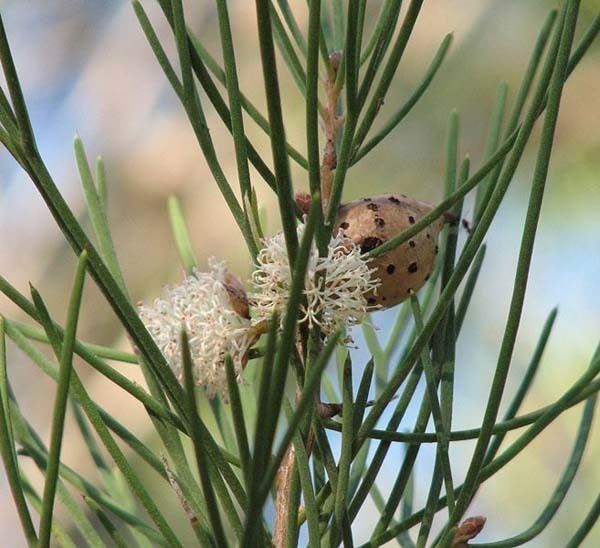Scientific name Hakea Rank Genus | Higher classification Proteas | |
 | ||
Similar Proteas, Banksia, Spider flower, Hakea laurina, Hakea sericea | ||
Hakea garden plants
Hakea (pincushion tree) is a genus of 149 species of shrubs and small trees in the Proteaceae, native to Australia. They are found throughout the country, with the highest species diversity being found in the south west of Western Australia.
Contents

They can reach 1–6 m in height, and have spirally arranged leaves 2–20 cm long, simple or compound, sometimes (e.g. H. suaveolens) with the leaflets thin cylindrical and rush-like. The flowers are produced in dense flowerheads of variable shape, globose to cylindrical, 3–10 cm long, with numerous small red, yellow, pink, purple, pale blue or white flowers.

Hakeas are named after Baron Christian Ludwig von Hake, the 18th century German patron of botany, following Heinrich Schrader's description of Hakea teretifolia in 1797.

It is now beginning to become accepted that Grevillea is paraphyletic with respect to Hakea. It is likely, therefore, that Hakea may soon be transferred into Grevillea.

Burke s backyard hakea laurina
Classification

Hakeas are closely related to the genus Grevillea and Finschia, both members of the subfamily Grevilleoideae within the family Proteaceae. Many species have similar inflorescences, but hakeas can be distinguished by their woody seed pods.
Horticulture
Hakeas are popular ornamental plants in gardens in Australia, and in many locations are as common as grevilleas and banksias. Several hybrids and cultivars have been developed. They are best grown in beds of light soil which is watered but still well drained.
Some showy western species, such as Hakea multilineata, H. francisiana and H. bucculenta, require grafting onto hardy stock such as Hakea salicifolia for growing in more humid climates, as they are sensitive to dieback.
Many species, particularly (but not always) Eastern Australian species, are notable for their hardiness, to the point they have become weedy. Hakea gibbosa, H. sericea and H. drupacea (previously H. suaveolens) have been weeds in South Africa, Hakea laurina has become naturalized around Adelaide, and Hakea salicifolia, Hakea gibbosa and Hakea sericea are invasive weeds in New Zealand.
